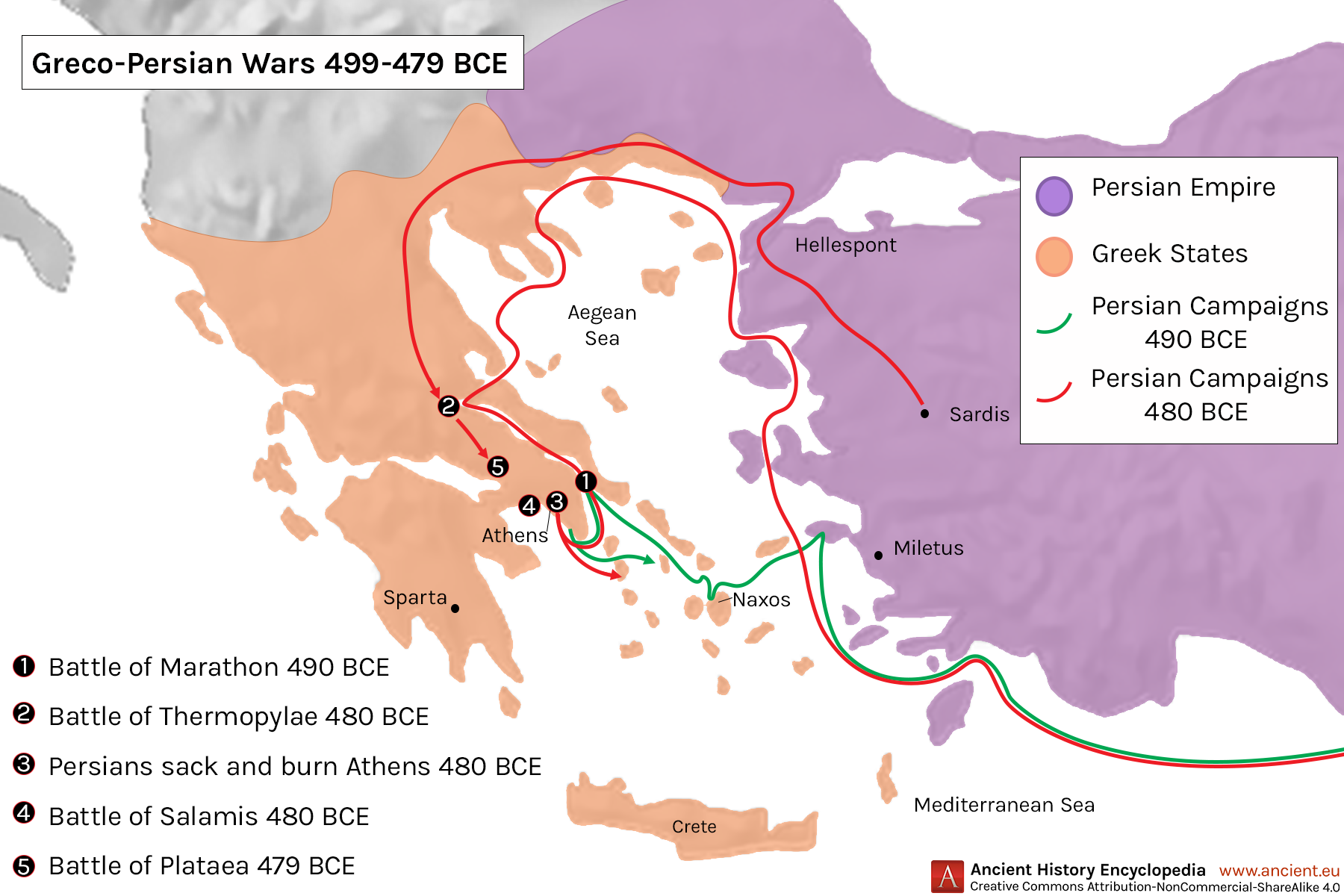Overview
Historical Background
The Famous Battle of Thermopylae is one of the most significant events in ancient Greek history. It took place in 480 BC during the Persian Invasion of Greece. The Persian Empire, led by King Xerxes I, sought to conquer Greece and expand its empire further. The Greeks, particularly the city-state of Sparta, were determined to resist the Persian forces and protect their homeland. The Battle of Thermopylae marked the beginning of a fierce struggle between the two sides, with the Spartans playing a crucial role in the defense of Greece.
The Persian Invasion
The Persian invasion of Greece in 480 BC marked a pivotal moment in history. Led by King Xerxes I, the Persian army embarked on a campaign to expand their empire and conquer the Greek city-states. The invasion was met with resistance from the Spartans, who were known for their fierce warriors and unwavering dedication to their homeland. The Persians, on the other hand, had a vast army consisting of soldiers from various nations, making them a formidable force. This clash of civilizations would go on to shape the course of Greek history and inspire countless tales of heroism and bravery.
The Spartan Response
The Spartan response to the Persian invasion was swift and determined. Recognizing the imminent threat to their homeland, the Spartans immediately mobilized their army and called upon their allies for support. Led by their renowned king, Leonidas, the Spartans devised a strategic plan to defend the narrow pass of Thermopylae. They knew that the Persian army, with its vast numbers, would be difficult to defeat head-on, so they focused on exploiting the terrain to their advantage. The Spartans positioned themselves at the narrowest point of the pass, using the steep cliffs and the sea to protect their flanks. They also constructed a defensive wall and set up a series of barriers to slow down the Persian advance. With their superior training and discipline, the Spartans were prepared to engage in a battle of attrition, wearing down the enemy forces through a series of skirmishes and ambushes. Their goal was to buy time for the rest of Greece to prepare for the Persian invasion. The Spartan response was not only a display of military prowess but also a testament to their unwavering dedication to their homeland and the principles of freedom and independence. Their heroic stand at Thermopylae would go down in history as one of the most valiant and inspiring acts of resistance against overwhelming odds.
The Battle Begins

The Persian Army Arrives
The Persian Army arrives at the narrow pass of Thermopylae, ready to engage in battle with the Spartan forces. Led by the Persian king Xerxes, the army is vast and formidable, consisting of thousands of soldiers from various nations. The Persians are confident in their superior numbers and believe that they will easily overcome the Spartans. However, they are unaware of the Spartans’ exceptional military skills and their determination to defend their homeland. As the Persians approach the pass, they are met with a sight that fills them with both awe and trepidation. The Spartans, numbering only 300, stand resolute and ready for the impending clash. This initial encounter between the two armies marks the beginning of a fierce and epic battle that will go down in history as one of the greatest military confrontations of all time.
The Spartan Strategy
The Spartan Strategy was a crucial element in the Battle of Thermopylae. The Spartans, led by their fearless king Leonidas, devised a plan to hold off the massive Persian army and buy time for the Greek city-states to prepare for the invasion. The strategy involved positioning the Spartan hoplites in a narrow pass known as the Hot Gates, where the Persian forces would be forced to fight in a confined space. This allowed the heavily armored Spartans to maximize their advantage in close combat. Additionally, the Spartans formed a phalanx formation, locking their shields together to create an impenetrable wall of defense. This defensive formation not only protected the Spartans but also allowed them to push back against the Persian onslaught. The Spartan Strategy was executed with precision and determination, and it played a crucial role in delaying the Persian advance and inflicting heavy casualties on their forces.
The First Clash
The first clash between the Spartan and Persian forces marked the beginning of an intense and brutal battle. As the Persian army advanced towards the Spartan position, the Spartans, led by their fearless leader Leonidas, stood their ground with unwavering determination. The clash was fierce, with both sides displaying remarkable skill and bravery. The Spartans, renowned for their exceptional combat abilities, fought with unmatched ferocity, striking fear into the hearts of their enemies. Despite being outnumbered, they held their own against the overwhelming Persian forces, inflicting heavy casualties and disrupting their advance. This initial clash set the tone for the rest of the battle, demonstrating the Spartans’ unwavering resolve and their commitment to defend their homeland at all costs.
The Heroic Stand

The Spartan Defense
The Spartan defense at the Battle of Thermopylae was a remarkable display of bravery and military skill. As the Persian army advanced, the Spartans formed a defensive line, utilizing their superior training and discipline. They created a phalanx formation, with soldiers locking their shields together to create an impenetrable wall. This formation allowed them to withstand the initial onslaught of the Persian forces. The Spartans fought with unwavering determination, holding their ground against overwhelming odds. They used their long spears, known as dorys, to devastating effect, impaling the enemy as they attempted to breach the Spartan line. Despite the relentless attacks from the Persians, the Spartans stood firm, refusing to retreat or surrender. Their unwavering resolve and selfless sacrifice inspired the other Greek city-states to unite in the face of the Persian invasion.
The Immortal Warriors
The Immortal Warriors, also known as the Ten Thousand Immortals, were an elite fighting force within the Persian Army. They were handpicked from the best soldiers across the Persian Empire and were trained rigorously in combat skills. These warriors were known for their unwavering loyalty to the Persian king and their fearless determination on the battlefield. Clad in gleaming armor and armed with deadly weapons, they struck fear into the hearts of their enemies. The Immortal Warriors played a crucial role in the Battle of Thermopylae, where they engaged in fierce combat against the Spartan warriors. Their superior numbers and relentless attacks posed a formidable challenge for the Spartans, who fought valiantly to defend their land. Despite the overwhelming odds, the Spartans displayed unmatched bravery and resilience, leaving a lasting impression on both their allies and enemies alike.
The Battle of the 300
The Battle of Thermopylae, also known as the Battle of the 300, was one of the most legendary and heroic stands in ancient history. It took place in 480 BC, during the Persian invasion of Greece. The Persian army, led by King Xerxes, vastly outnumbered the Greek forces, but the Spartans, under the leadership of King Leonidas I, were determined to defend their homeland. The battle began with the arrival of the Persian army, which consisted of thousands of soldiers and a formidable fleet. The Spartans, known for their disciplined and highly trained warriors, devised a strategy to hold off the Persians at the narrow pass of Thermopylae. The first clash between the two armies was intense and bloody, with both sides fighting fiercely. The Spartans, with their superior training and fierce determination, managed to hold their ground against the Persian onslaught. The battle of the 300 Spartans against the Persian army has been immortalized in numerous books, movies, and artworks, showcasing the bravery and sacrifice of the Spartan warriors. It remains one of the top historical battle movies.
Conclusion

Legacy of the Battle
The Battle of Thermopylae has left a lasting legacy in the annals of history. It is regarded as one of the most epic and heroic battles of all time. This battle showcased the indomitable spirit and unyielding courage of the Spartan warriors against overwhelming odds. The sacrifice and determination of the 300 Spartans, led by King Leonidas, have become the epitome of bravery and selflessness. The battle also had a significant impact on Greek history, as it galvanized the Greek city-states to unite against the Persian Empire. The defeat of the Persian army at Thermopylae marked a turning point in the Greco-Persian Wars and ultimately led to the preservation of Greek culture and civilization. The legacy of this battle continues to inspire and captivate people to this day, as it serves as a reminder of the power of resilience and the triumph of the human spirit.
Impact on Greek History
The Battle of Thermopylae had a profound impact on Greek history. Firstly, it showcased the heroic spirit and military prowess of the Spartans, who were willing to sacrifice their lives to defend their homeland. This inspired other Greek city-states to unite and fight against the Persian Empire. Secondly, the battle demonstrated the vulnerability of the Persians, who despite their vast numbers, were unable to defeat the determined Spartan warriors. This gave the Greeks confidence in their ability to resist future invasions. Additionally, the battle highlighted the importance of strategic defense and the advantage of fighting on familiar terrain. The Spartans’ use of the narrow pass at Thermopylae effectively neutralized the Persian advantage in numbers. Lastly, the Battle of Thermopylae became a symbol of resistance and courage for the Greeks, serving as a rallying cry in subsequent conflicts against the Persians. It became a defining moment in Greek history and a testament to the power of unity and determination in the face of overwhelming odds.
Lessons Learned
The Battle of Thermopylae taught the Greeks several valuable lessons that would shape their future military strategies. One of the most important lessons was the power of unity and cooperation. The Greeks realized that by working together and putting aside their differences, they could stand strong against a common enemy. The Spartan warriors, with their unwavering determination and courage, became a symbol of the Greek resistance. Another lesson learned was the importance of knowledge and preparation. The Spartans, led by King Leonidas, studied the terrain and devised a strategic plan to maximize their advantage. They understood the significance of defensive positions and used the narrow pass of Thermopylae to their advantage. Additionally, the battle highlighted the significance of leadership and sacrifice. King Leonidas and his 300 Spartans demonstrated exceptional leadership skills and were willing to sacrifice their lives for the greater good. Their unwavering loyalty and commitment to their homeland inspired future generations. Overall, the Battle of Thermopylae served as a reminder of the indomitable spirit and resilience of the Greek people, as well as the importance of strategic planning and unity in the face of adversity.
Avid Writer with invaluable knowledge of Humanity!
Upcoming historian with over 30 million views online.
“You make your own life.”





